Title Image:Fact Monster
When Japan was struck so mightily by the powers of nature back in March 2011, the first concerns were, of course, for the safety of the Japanese people.
It is difficult to imagine being faced with a 50 foot wall of water. Not only did the impact deliver a massive swathe of destruction but it also claimed 19,000 lives with a further 1,000 to die as a result of their injuries and conditions which directly resulted.
The earthquake which started it all was registered as a ‘9’ and lasted for over three minutes, causing considerable structural damage before the tsunami even arrived. 180kms off shore an area of the seafloor extending 650 km north-south moved typically 10-20 metres horizontally. Japan moved a few metres east and the local coastline subsided half a metre. The tsunami, which was about 80 feet high at origin inundated 560 square kilometres of Japan.
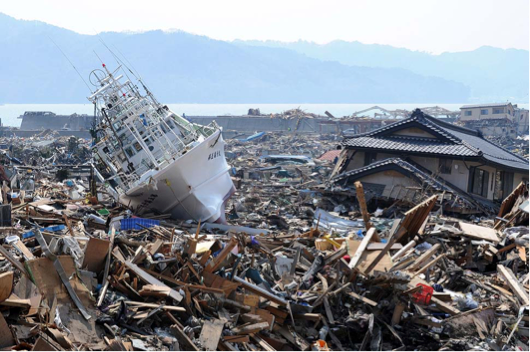
Image: LA Times
It was a disaster which was about to get worse.
In the aftermath of the catastrophe, we learned that there was a serious problem with the Fukushima Nuclear Power Station. Referring to the Fukushima Nuclear facilities is in fact incorrect; there are two – Daiichi and Daini which are about 11 kms apart.
The construction of the plants was designed to withstand the worst tsunami relevant to the engineers, that of Chile in 1960, a 3.1 metre wave. The construction height was set at 10 metres above the high water mark as a precaution.
In the event, the tsunami, at 15 metres, engulfed the sites and the Daiichi turbine halls were under some 5 metres of seawater until levels subsided. Daini was less affected. Both plants experienced ground movements beyond their structural capacities, despite being built on rock.
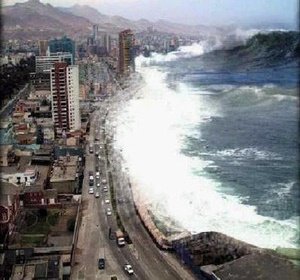
Image: Heavy.com
Immediate aftermath
Clearly, contaminated water was being fed into the sea as the inundation subsided. It will never be possible, obviously, to ascertain to what extent radionuclides were released. It took three weeks to gain any control over the situation.
By the end of March all storages around the four units at Daiichi – basically the main condenser units and condensate tanks – were largely full of contaminated water pumped from the buildings. Some 1000 storage tanks were set up progressively, including initially 350 steel tanks with rubber seams, each holding 1200 m3. Water was still leaking from the reactors.
The decision making was tough. The working conditions had to be safe enough to have workers in the area but the effluent into the sea from on-going leaks had to be stopped.
Two entities which should be explained: Tepco (Tokyo Electric Power Co.) is the company which runs the Nuclear Plants and NISA is the Nuclear and Industrial Safety Agency.
Between the 4th and 10th of April, 2011 Tepco, with government approval, released to the sea about 10,400 cubic metres of slightly contaminated water (0.15 TBq total) in order to free up storage for the more highly-contaminated water in the reactor. NISA confirmed that there was no significant change in radioactivity levels in the sea as a result of the 0.15 TBq discharge.
Definitions:
One becquerel (Bq) is defined as the activity of a quantity of radioactive material in which one nucleus decays per second.
TBq (terabecquerel, 10 to the 12 Bq)
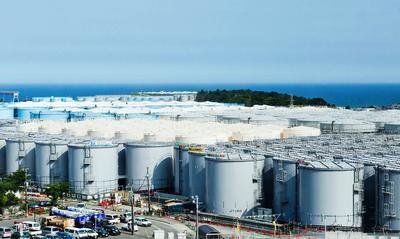
Contaminated Water Storage at the Daiichi Plant. Image: Ko Sasaki for The New York Times
Exposure to radiation is something we all experience every day. It is a part of our natural world. It is excessive reception of radioactive material that is dangerous. This is measured in Sieverts and microSieverts. Levels are explained below:
How Much Radiation Is Dangerous?
It depends who you ask. Some people will say no amount is safe, but that doesn’t really help us understand the relative dangers. Here are some basic numbers to use as a guide (μSv means microSieverts):
10 μSv – The average radiation you received today
40 μSv – The radiation you receive by taking a flight from New York to L.A.
100 μSv – The radiation you receive during a dental x-ray
800 μSv – Total radiation dose at Three-Mile Island for the duration of the accident
3,000 μSv – Radiation dose from a mammogram
3,600 μSv – Average radiation a US citizen receives in a year from all sources
50,000 μSv – Maximum allowable yearly occupational dose (USA)
100,000 μSv – Lowest yearly dose likely linked to increased cancer risk
2,000,000 μSv – Severe radiation poisoning (sometimes fatal)
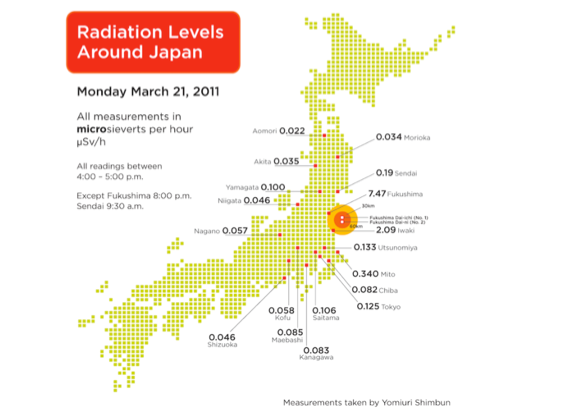
Image: pureearth.org
By August 2011, Tepco had installed and commissioned water treatment plants to remove radionuclides from the contaminated water from the reactors which was building up again in storage tanks. Without getting too technical, the water treatment side of things was going well but the leakage from the reactors was causing headaches.
Treating contaminated water removes all radioactive isotopes except tritium, a radioactive form of hydrogen. Titrium is absorbed by the water molecules and so any discharge has to be heavily diluted prior to disposal into the sea.
From 4,000 litres of leakage per day in 2011, this had been reduced to 1,500 litres per day in early 2016. Ground water entering through the cracked rock upon which the plant was built in the 1960s was as much of a problem as it mixed with the leaking water from the reactor and all had to be decontaminated.
The sheer volumes involved in treatment and storage were becoming critical. So Tepco devised a plan to put in an ‘ice wall’ to prevent leakage from the reactor and block natural ground water from leaking into the plant through fissures in the rock. This was greeted with enormous scepticism but, at 35 billion yen or $320 million, it was a gamble they almost had to take with the equivalent of 320 Olympic-size swimming pools of water causing storage problems.
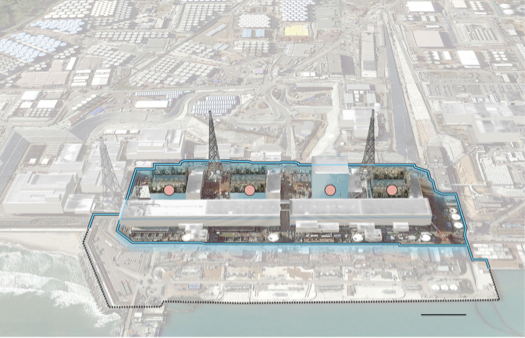
The Ice Wall Plans. Image: TerraMetrics
The ‘ice wall’ is an underground wall of frozen dirt 100 feet deep and nearly a mile in length and is said to be 99% effective. There now remains the headache of how to decommission the reactors. Nobody knows the state of the rods inside the facility or how badly the whole plant is really damaged. They are using robots to work out the best way forwards.
Inherent Health Risks
Initial fears that the whole area would be uninhabitable for generations have been shown to be misplaced. There is a 20km exclusion zone around the plant and the prevailing radioactivity is becoming benign against normal levels.
The tests carried out upon fish and seafood generally have all passed the acceptable levels required by all foods standards authorities.
There was the curious case of the aircraft carrier, the USS Reagan which was in the area at the time of the disaster. The crew brought a huge case against Tepco claiming $1billion in damages. Their witness statements included : ulcers; “migraines and sinus problems”; irregular menstrual cycles; “declining sex drive;” anxiety; “my back, neck, and entire right side of my body were cramping up and hurting from sitting in a chair too long.” None of these ailments are recognized chronic effects of radiation.
It later transpired that many of the plaintiffs were not even on the ship!
The case was dropped.
Financial Cost
In December 2013 the government raised the upper limit of its financial assistance to Tepco from JPY 5 trillion to JPY 9 trillion ($86 billion). Early in 2014 the government estimated it would take JPY11 trillion and 40 years to clean up the Fukushima site. The 2013 Japan trade deficit was JPY 11.5 trillion.
By mid-May 2014, Tepco had paid JPY 3808 billion ($38 billion) in compensation, fairly evenly split between businesses and individuals, based on decisions of the Nuclear Damage Compensation Facilitation Corporation. Some $16 billion of this was distributed evenly among 85,000 evacuees – $188,200 each person including children, as directed early in 2011.
In July 2015 the government approved Tepco’s recovery plan, including compensation payments of JPY 7075 billion ($57.2 billion).
In writing this I am pleased to be able to say that whilst the incident was a tragedy in many respects, the reaction and management of the Japanese is to be commended. I feared for a far worse outlook.
It strikes me as strange that whilst lessons appear to have been learned, there is not one suggestion that building a Nuclear Power Plant on the notorious ‘Ring of Fire’ is pretty daft.
Further Reference Materials:
Tepco Decommissioning Plan
The Truth about Health Issues from Fukushima
Tepco Decommissioning and Contaminated Water Management Explained
